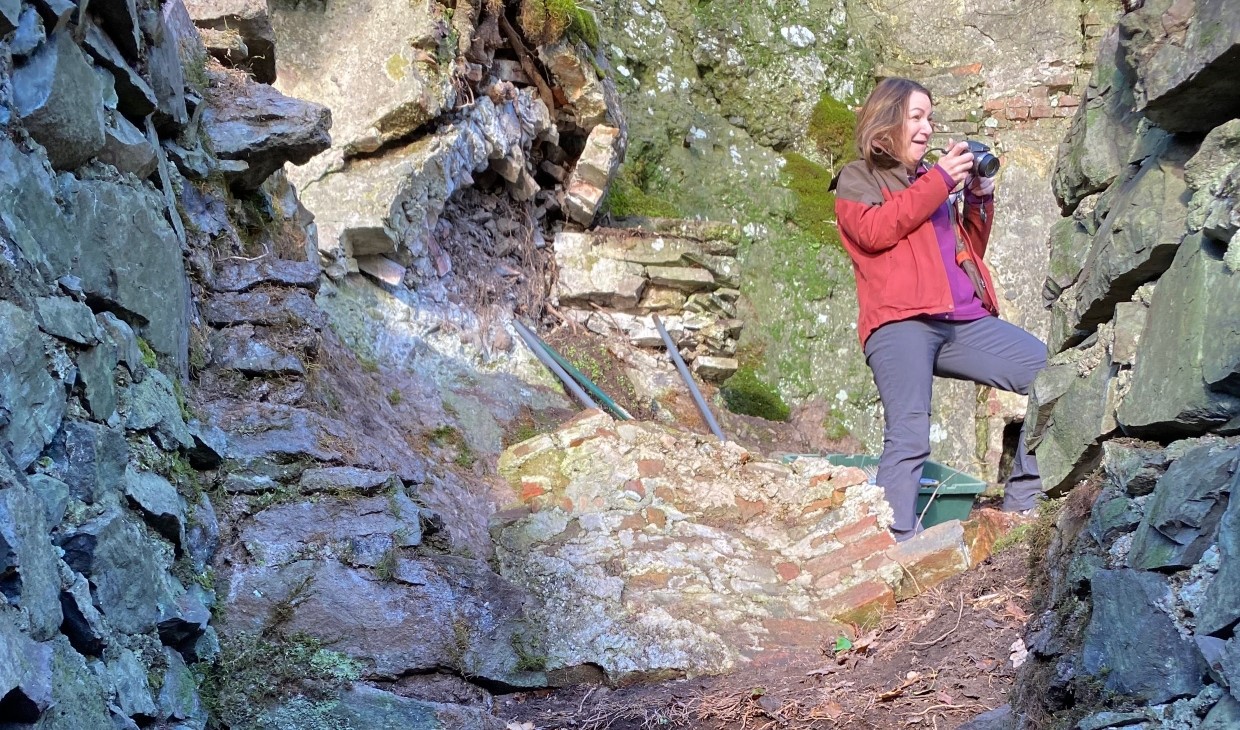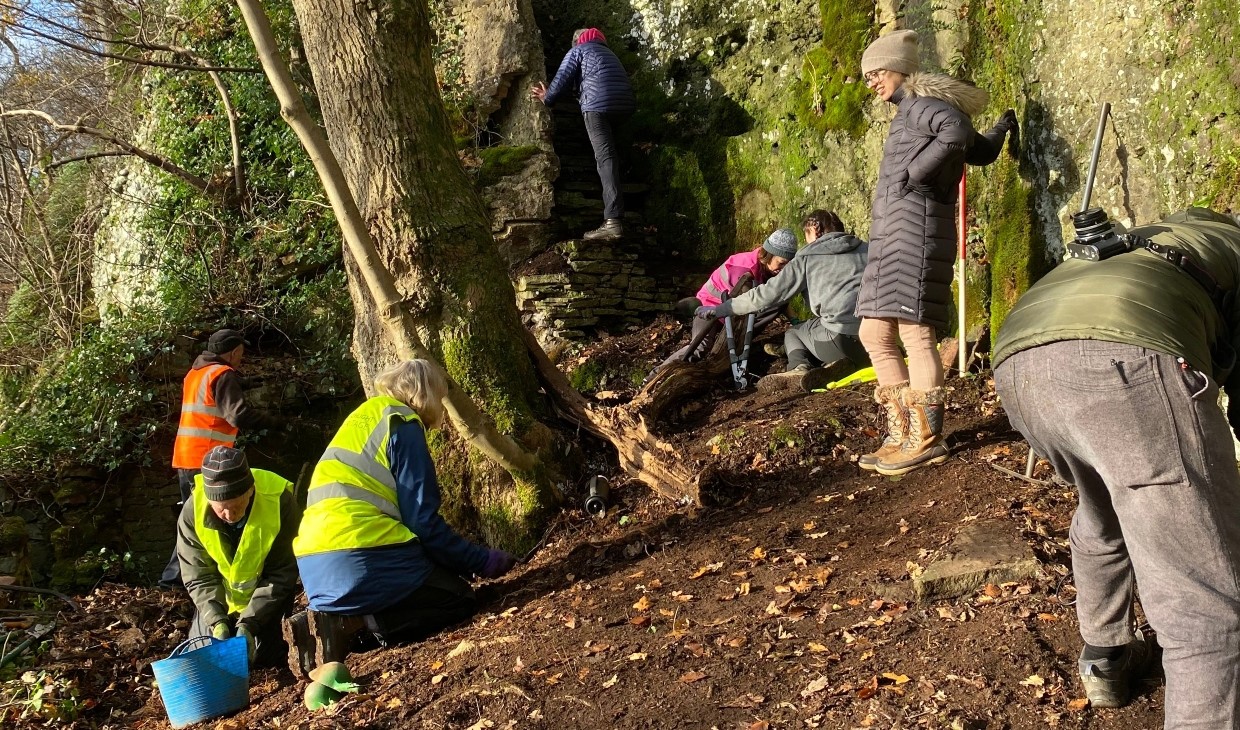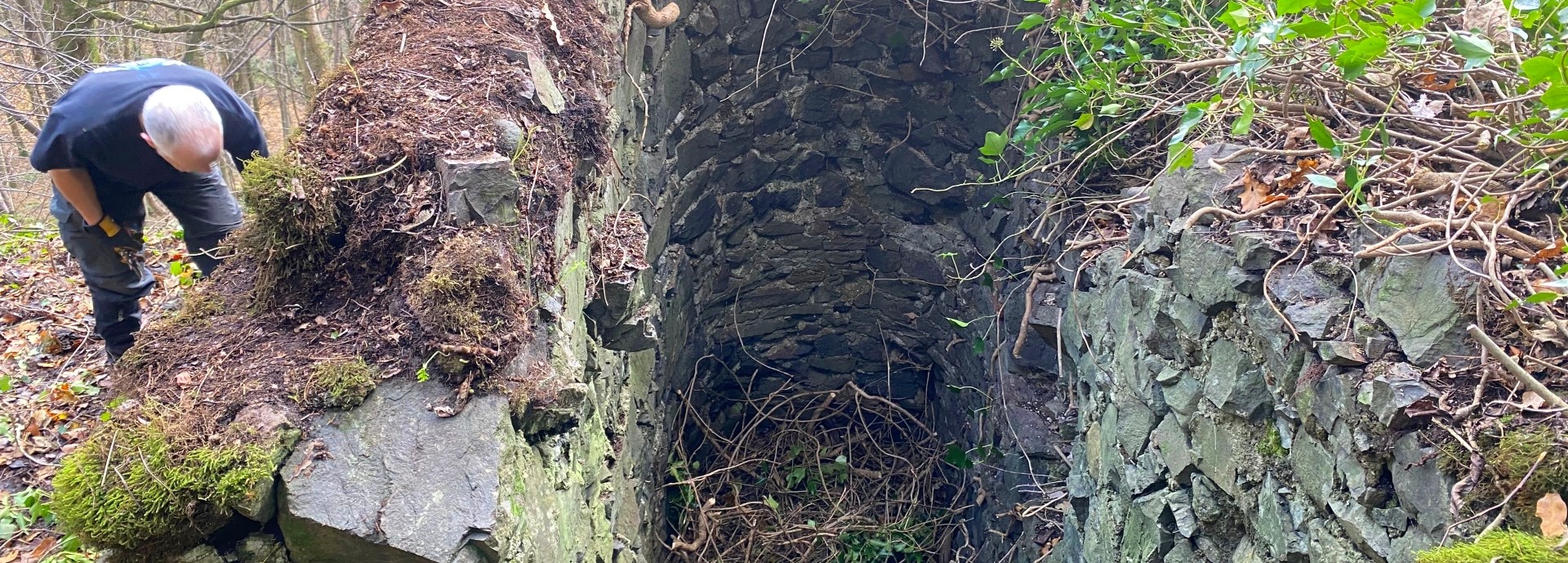A project involving the University of Stirling, Stirling Council and a group of volunteers has uncovered a historic folly on the university grounds.
The Hermitage was built in the late 18th century through money made from a family of East India Captains, whose wealth came from the British conquest of India.
Generations of students at the University have jogged or walked past the ruined tower on the cliffs above its green campus and wondered what it was. The more adventurous scrambled up the slope to find a ruined staircase going nowhere, to find the remains of teenage parties and an overgrown ruin but still no answer to the mystery.
The structure formed a key element of a series of designed walks within the estate and provided a viewing point for across the estate which was framed between Abbey Craig, where the National Wallace Monument stands, and Stirling Castle.
Although the whole estate was designated as a designed landscape by Historic Environment Scotland, there was no formal record of the building which kept hold of its secrets.
So in late 2023 a group of volunteers led by Stirling Council Archaeologist Dr Murray Cook, in collaboration with the University of Stirling Art Collection, led a clearing and recording exercise to reveal the structure and its story.
The project was inspired by the work of University Artist in Residence Audrey Grant. Audrey is an award-winning painter whose practice includes drawing, photography, and site-specific installation.
Audrey’s residency has focused on the ancient Airthrey Estate where the University is located. She became fascinated with the historic buildings, including the Hermitage, which remain in the landscape within the lush woods on the periphery of the modern University estate.
Audrey said: “From the very beginning of my Residency in May 2023 I was intrigued by the ancient woods and ruins residing in The Hermitage and have spent months exploring and photographing them.
“A conversation with Murray Cook and Sarah Bromage, Head of Collections at the University, led to this wonderful project - to properly unearth what lay under the vegetation and document the ruinous remaining structures there.
“The artist Anselm Kiefer says that ‘Landscape is the memory of the past ruins insert their dead and vanished past into our living present and we allow them to age and grow older’.
“I spent two days recording sounds, shooting Super 8 film and photographing Murray and his team uncovering the past which was a great gift.”
Prior to this project little was known about the Hermitage. The structure was built in the last decade of the 18th century by Robert Haldane in his early 20s after inheriting two fortunes from his Great Uncle and his father.
Robert rebuilt the whole estate employing the famous architect Robert Adam to design the new Airthrey Castle.

The Hermitage was designed primarily to provide a viewing point across the estate so Robert could show it off to his neighbours but he was a man of whimsy and had both a joke and an immersive poetry experience in mind.
The building would recreate a famous poem by Oliver Goldsmith, The Hermit. Its lines were on the walls, there was fake furniture and he even advertised for a hermit to live in the building, apparently as a joke.
The one applicant refused as there was a restriction of walking into Bridge of Allan. There was also room with coloured glass and a fake fire that seems to have been designed to look like a volcanic fissure.
Stirling Council Archaeologist Murray Cook said “It’s incredible that such an odd and unique building lay unrecorded and unremarked in the University's grounds.
“The views from it are amazing and it was great fun to uncover it and its story. Today we are used to the weird ideas of tech billionaires whose wealth has no limits and any idea can be indulged, but the same was true for Robert, he inherited a fortune in his teens and built a very whimsical joke in his 20s.”
Head of the University of Stirling Collections Sarah Bromage said “We are so pleased that Audrey’s residency has instigated this collaborative project to explore this unknown part of the University campus.
“Each academic year, all of the Art Collection’s exhibitions, events and workshops are directly inspired by one of the University research themes. This year our chosen focus is Inspired! in which we celebrate how the beautiful University of Stirling campus and our collections have inspired creativity in many ways.
“We hope that this work relooking at these ancient spaces and interpreting them artistically will encourage people to explore the landscape and take new inspiration from the campus itself.”
Stirling Council Leader, Cllr Chris Kane said: “As we prepare to celebrate Stirling’s 900th anniversary as a royal burgh this year, it’s remarkable that we’re still uncovering and recording our built heritage, providing fresh insight into the stories of our people and our past.
“Congratulations to everyone involved in The Hermitage project, and we look forward to working with the University and other partners to showcase the area’s incredible history during the Stirling 900 milestone.”
An exhibition of Audrey’s work created during her residency will be on display in the University’s Pathfoot Building from 26th May to 31st August 2024.
For further details about Audrey’s residency and the Art Collection at Stirling, including upcoming exhibitions and upcoming events, visit Art Collection | About | University of Stirling
For more info on Stirling's 900th anniversary celebrations, visit stirling900.com 
A group of volunteers led a clearing and recording exercise to reveal the structure and its story.

